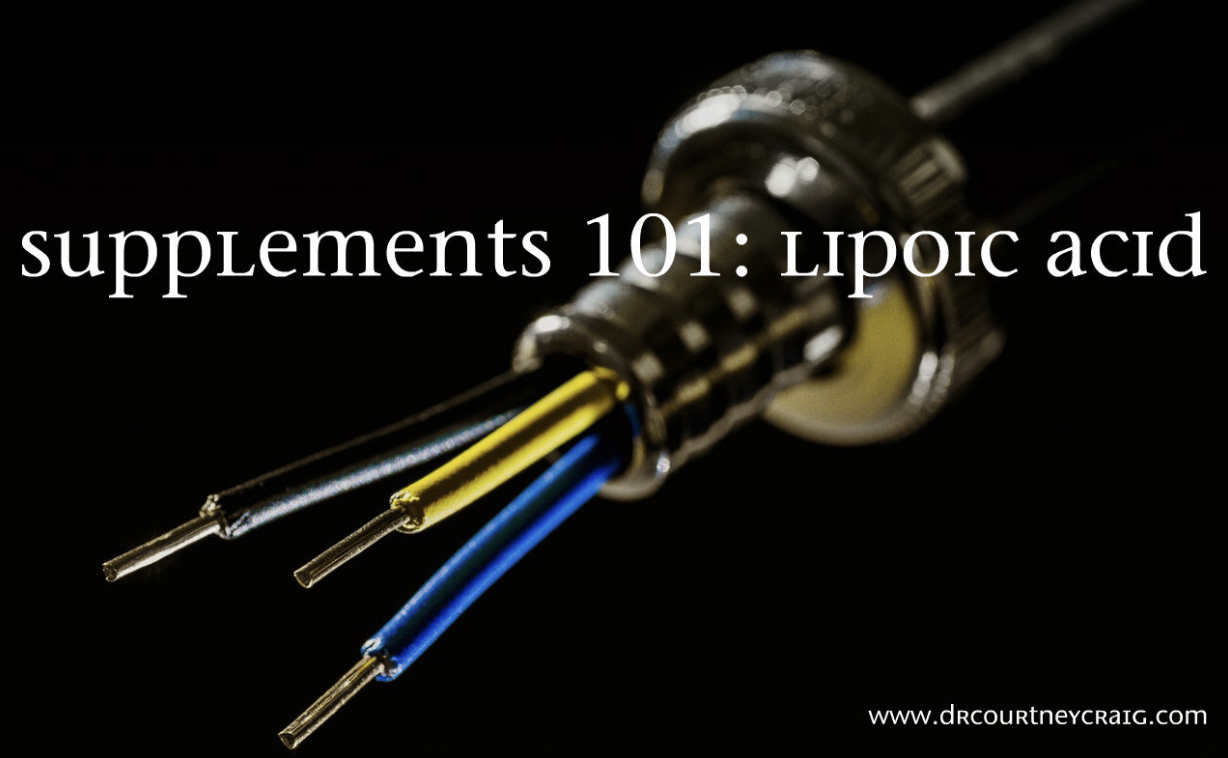Supplements 101: Alpha-Lipoic Acid (ALA) for Chronic Fatigue, Fibromyalgia, and Neuropathy
Alpha-lipoic acid (ALA) is a powerhouse nutrient essential for mitochondrial energy production and known for its impressive antioxidant properties. If you’re managing ME/CFS, fibromyalgia, or neuropathy, ALA could be a valuable addition to your supplement routine. Let’s dive into what makes ALA so unique and how it may benefit these conditions.
What is Alpha-Lipoic Acid (ALA)?
ALA is a naturally occurring compound that acts as a coenzyme in mitochondrial energy production. It’s vital for breaking down fats, sugars, and proteins into usable cellular energy, ATP. Additionally, ALA works as a recycling agent for antioxidants, including CoQ10, glutathione, and vitamins C and E, amplifying their protective effects.
Benefits of ALA Supplementation
Mitochondrial Support:
ALA enhances energy production in the mitochondria, potentially reducing fatigue.
It shields the mitochondria from free radical damage, preserving cellular health.
Antioxidant Action:
ALA neutralizes harmful free radicals, reducing oxidative stress—a hallmark of post-viral conditions.
It stimulates the Nrf2 pathway, which protects DNA and supports liver detoxification.
Heavy Metal Chelation:
ALA binds to excess metals like iron and copper, aiding in their removal and reducing toxicity.
How ALA Helps with Neuropathy
ALA is approved in Germany for treating peripheral neuropathy, particularly diabetic neuropathy. Studies have shown that doses of 600 mg/day can significantly reduce neuropathy symptoms such as pain, tingling, and numbness. Intriguingly, while nerve conduction tests showed no improvement, patients reported substantial relief—hinting at ALA’s potential impact on small fiber neuropathy (SFN).
ALA for Fibromyalgia and Small Fiber Neuropathy (SFN)
Emerging research suggests that up to 50% of fibromyalgia patients may have SFN, which affects tiny nerve fibers responsible for pain and autonomic functions. ALA’s ability to alleviate neuropathy symptoms, even without improving large fiber nerve conduction, makes it a promising option for fibromyalgia-related SFN.
Symptoms ALA may help with:
Burning, tingling, or pins-and-needles sensations.
Allodynia (pain from non-painful stimuli).
Autonomic symptoms like sweating irregularities, gut issues, or palpitations.
ALA in Neurodegenerative Diseases
ALA has also been studied in conditions like multiple sclerosis (MS) for its neuroprotective effects:
Blood-brain barrier support: ALA reduces markers of inflammation that contribute to a leaky blood-brain barrier.
Antioxidant boost: Increases total antioxidant capacity in MS patients.
Reduced brain atrophy: A two-year trial in secondary progressive MS showed slower brain atrophy and improved walking speed with 1,200 mg/day of ALA.
These findings suggest potential benefits for cognitive symptoms, brain fog, and neuroinflammation in ME/CFS and fibromyalgia.
Choosing the Right ALA Supplement
Bioavailability is a key challenge with ALA. Only 30–40% of traditional ALA supplements are absorbed, and their effects are short-lived (lasting about an hour). Here’s how to maximize its effectiveness:
Better Absorption:
Liquid formulations offer improved bioavailability.
LA-Plus: A novel formulation designed to remain in cells longer for sustained effects.
Dosing:
For neuropathy: 600 mg/day.
For fatigue and brain health: 1,200 mg/day in divided doses.
Take ALA on an empty stomach, as food reduces absorption.
Administration Methods:
Oral: Convenient but less effective compared to liquid or IV forms.
Intravenous (IV): Provides the highest bioavailability and fastest effects.
Dietary Sources of ALA
Although ALA is found in foods, the amounts are negligible compared to supplements:
Animal sources: Red meat, kidney, liver, heart.
Plant sources: Spinach, broccoli, Brussels sprouts, tomatoes, rice bran.
However, dietary ALA is bound to proteins, making it less bioavailable.
Side Effects and Precautions
ALA is generally safe, but here are a few considerations:
Diabetics: ALA can interact with diabetes medications, potentially causing blood sugar swings.
Rare side effects: Include nausea, rash, or a metallic taste.
Bottom Line
ALA is a potent supplement with wide-ranging benefits for those managing chronic conditions like ME/CFS, fibromyalgia, and neuropathy. Its role in supporting mitochondrial health, reducing oxidative stress, and alleviating neuropathy symptoms makes it a compelling option.
Choose a high-quality, bioavailable form like liquid ALA or LA-Plus, and consult your healthcare provider to tailor the dose to your specific needs. Whether you’re looking to combat fatigue, relieve neuropathy, or support brain health, ALA may be the missing link in your supplement regimen.
References
Image courtesy of AB Electrical & Communications Ltd.
Park S. et al (2004) Physiological effect and therapeutic application of alpha lipoic acid. Curr Med Chem. 21(32):3636-45.
M Swiecka. (2018) Small fiber neuropathy as a part of fibromyalgia or a separate diagnosis. Int. J. Clin. Rheumatol. 13(6), 353-359.
McIlduff CE & Rutkove SB. (2011) Critical appraisal of the use of alpha lipoic acid (thioctic acid) in the treatment of symptomatic diabetic polyneuropathy. Ther Clin Risk Manag. 7: 377–385.
Sen, C. K., Tirosh, O., Roy, S., Kobayashi, M. S., & Packer, L. (1998). A Positively Charged α-Lipoic Acid Analogue with Increased Cellular Uptake and More Potent Immunomodulatory Activity. Biochemical and Biophysical Research Communications, 247(2), 223–228.
Liu J. (2008) The effects and mechanisms of mitochondrial nutrient alpha-lipoic acid on improving age-associated mitochondrial and cognitive dysfunction: an overview. Neurochem Res. 33(1):194-203.
Waslo, C., Bourdette, D., Gray, N., Wright, K., & Spain, R. (2019). Lipoic Acid and Other Antioxidants as Therapies for Multiple Sclerosis. Current Treatment Options in Neurology, 21(6).

